
How to Use ESP32 T-Internet-Poe: Examples, Pinouts, and Specs
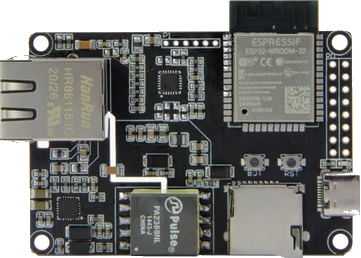
 Design with ESP32 T-Internet-Poe in Cirkit Designer
Design with ESP32 T-Internet-Poe in Cirkit DesignerIntroduction
The ESP32 T-Internet-PoE by LILYGO (Part ID: T-Internet-POE) is a versatile microcontroller board designed for Internet of Things (IoT) applications. It combines the powerful ESP32 microcontroller with integrated Wi-Fi and Bluetooth capabilities, making it ideal for wireless communication. Additionally, it features Power over Ethernet (PoE) support, enabling the board to receive both power and data through a single Ethernet cable. This simplifies installation, reduces wiring complexity, and makes it suitable for remote or hard-to-reach deployments.
Explore Projects Built with ESP32 T-Internet-Poe
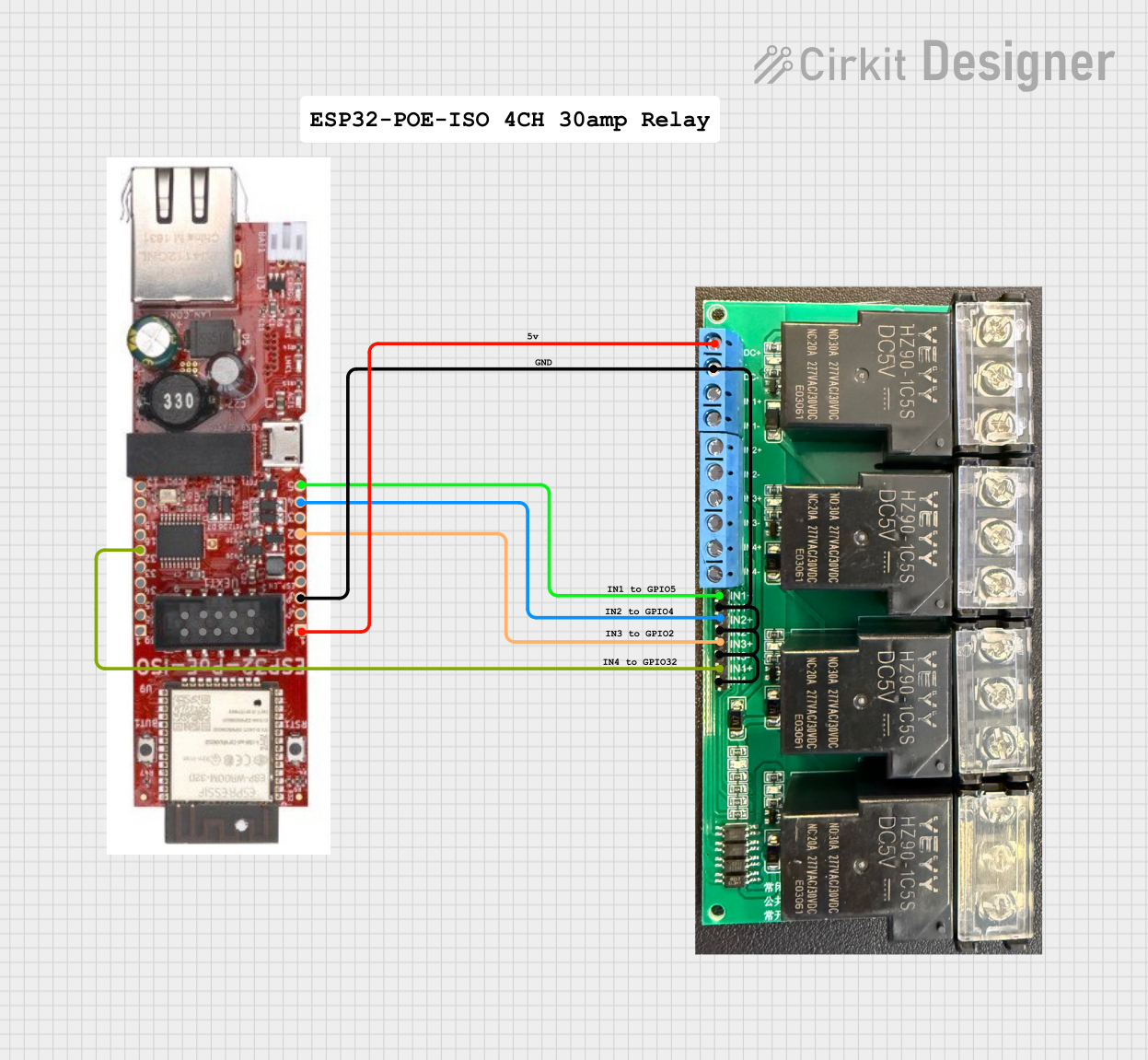
 Open Project in Cirkit Designer
Open Project in Cirkit Designer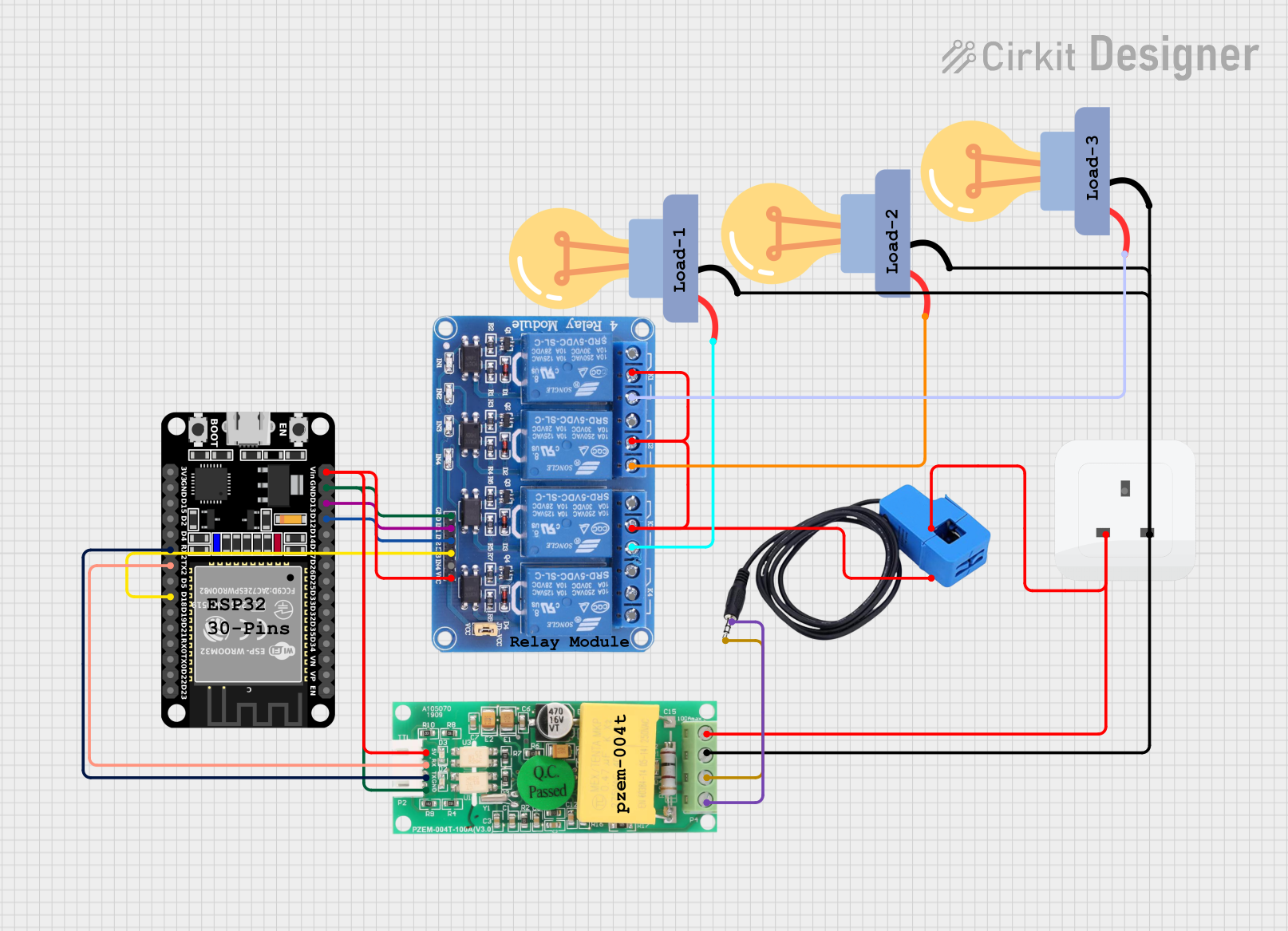
 Open Project in Cirkit Designer
Open Project in Cirkit Designer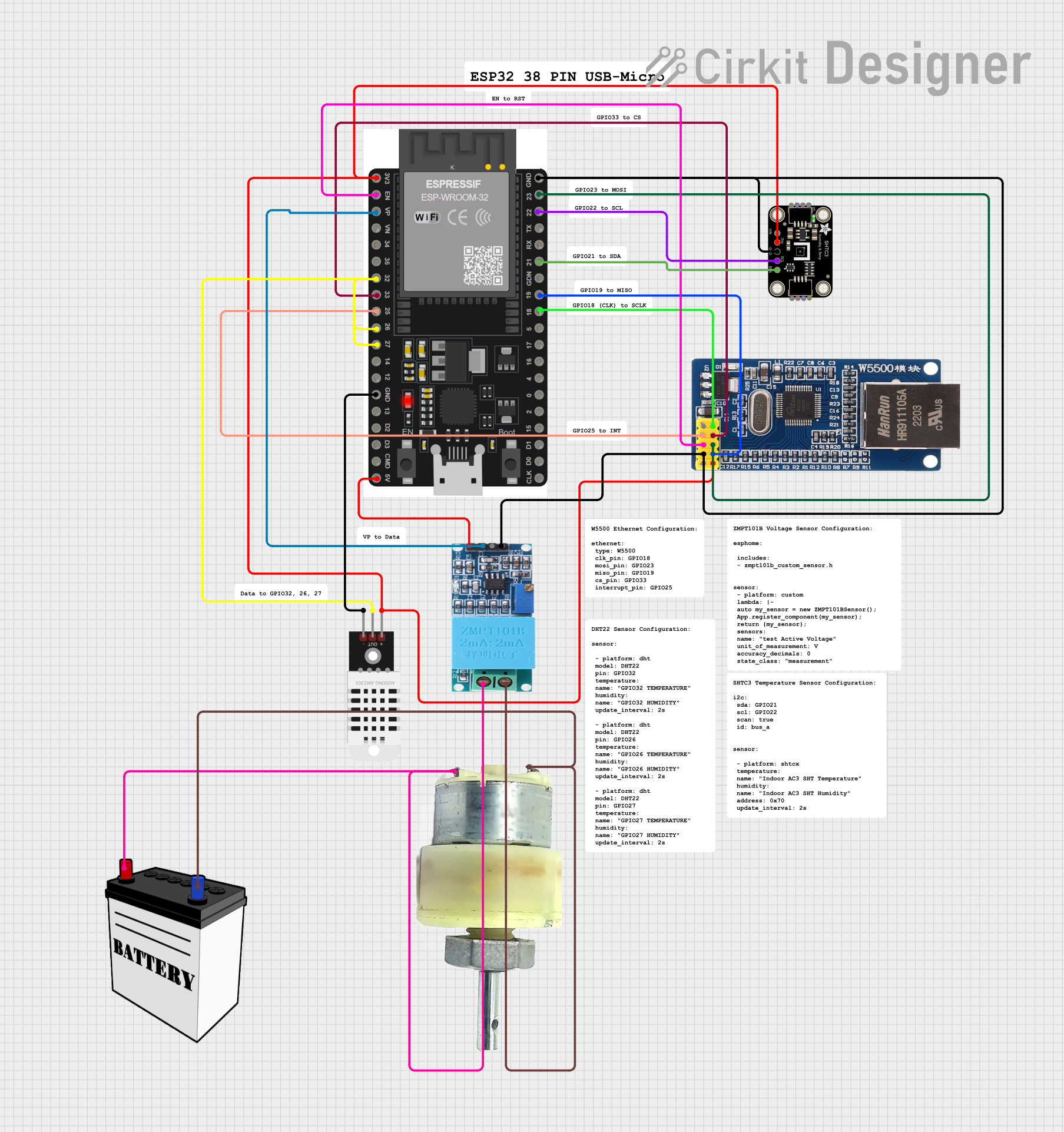
 Open Project in Cirkit Designer
Open Project in Cirkit Designer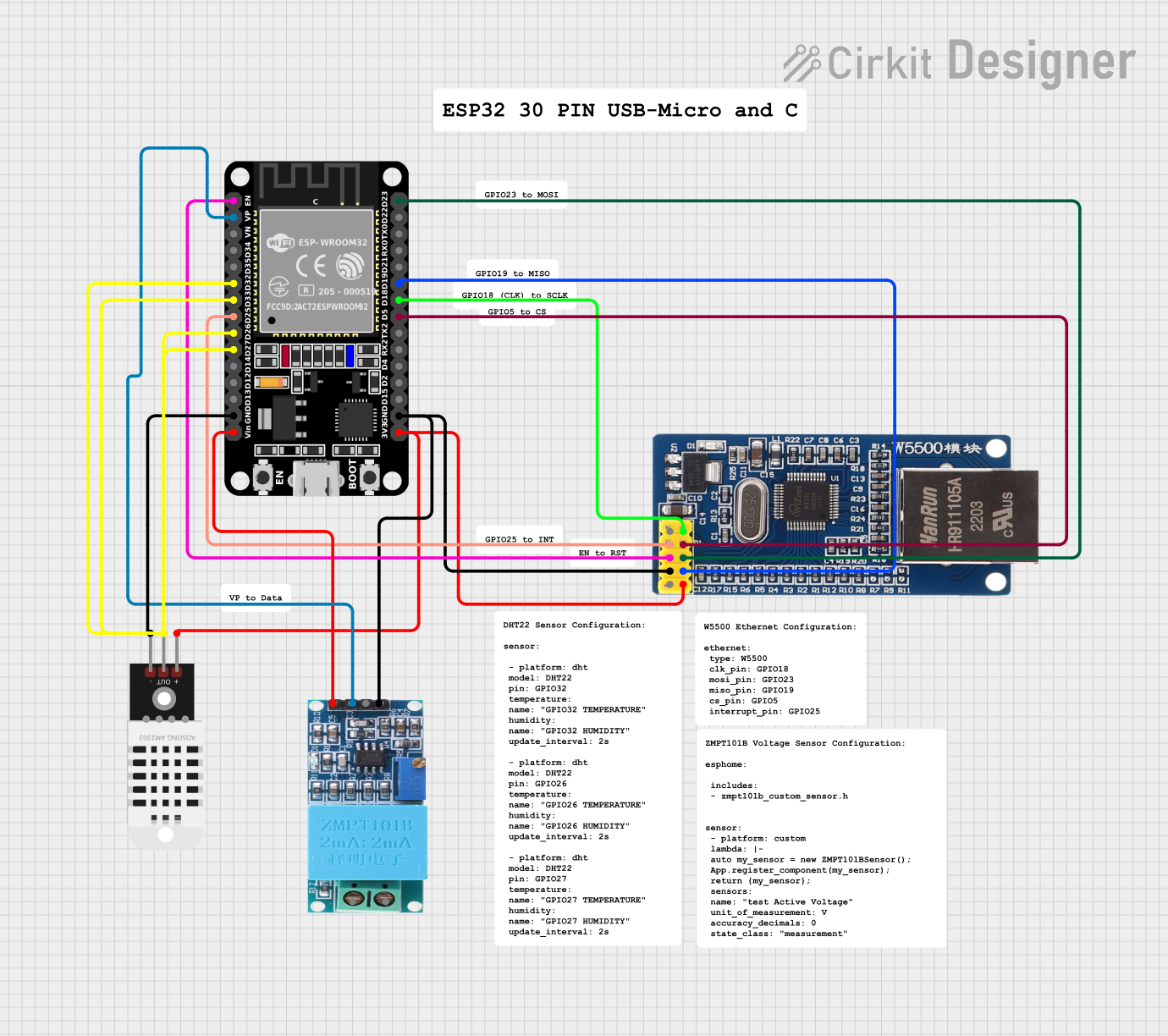
 Open Project in Cirkit Designer
Open Project in Cirkit DesignerExplore Projects Built with ESP32 T-Internet-Poe

 Open Project in Cirkit Designer
Open Project in Cirkit Designer
 Open Project in Cirkit Designer
Open Project in Cirkit Designer
 Open Project in Cirkit Designer
Open Project in Cirkit Designer
 Open Project in Cirkit Designer
Open Project in Cirkit DesignerCommon Applications and Use Cases
- Smart home automation systems
- Industrial IoT (IIoT) devices
- Remote environmental monitoring
- Networked sensors and actuators
- Smart lighting and energy management
- Security and surveillance systems
Technical Specifications
Below are the key technical details of the ESP32 T-Internet-PoE:
| Specification | Details |
|---|---|
| Microcontroller | ESP32 dual-core processor with Xtensa LX6 architecture |
| Clock Speed | Up to 240 MHz |
| Flash Memory | 4 MB (varies by model) |
| SRAM | 520 KB |
| Connectivity | Wi-Fi (802.11 b/g/n), Bluetooth 4.2 (Classic + BLE) |
| Ethernet | 10/100 Mbps Ethernet with PoE support |
| Power Input | PoE (IEEE 802.3af) or 5V via USB-C |
| GPIO Pins | 20+ GPIO pins with multiple functions (PWM, ADC, I2C, SPI, UART, etc.) |
| Operating Voltage | 3.3V (logic level) |
| Dimensions | 60mm x 25mm x 10mm |
| Operating Temperature | -40°C to 85°C |
Pin Configuration and Descriptions
The ESP32 T-Internet-PoE features a variety of pins for interfacing with peripherals. Below is the pinout description:
| Pin Name | Function | Description |
|---|---|---|
| VIN | Power Input | 5V input via USB-C or external power source. |
| GND | Ground | Common ground for the circuit. |
| GPIO0 | General Purpose I/O | Can be used for input/output, ADC, or other functions. |
| GPIO1 | General Purpose I/O | UART TX pin (default) or configurable for other functions. |
| GPIO2 | General Purpose I/O | UART RX pin (default) or configurable for other functions. |
| GPIO12-19 | General Purpose I/O | Multi-purpose pins for PWM, I2C, SPI, ADC, etc. |
| TX/RX | UART Communication | Dedicated UART pins for serial communication. |
| EN | Enable | Used to enable or reset the ESP32 module. |
| Ethernet TX+ | Ethernet Transmit Positive | Ethernet data transmission (PoE). |
| Ethernet TX- | Ethernet Transmit Negative | Ethernet data transmission (PoE). |
| Ethernet RX+ | Ethernet Receive Positive | Ethernet data reception (PoE). |
| Ethernet RX- | Ethernet Receive Negative | Ethernet data reception (PoE). |
Usage Instructions
How to Use the ESP32 T-Internet-PoE in a Circuit
Powering the Board:
- Connect the board to a PoE-enabled Ethernet switch or injector to provide both power and data.
- Alternatively, power the board via the USB-C port using a 5V power source.
Connecting Peripherals:
- Use the GPIO pins to connect sensors, actuators, or other peripherals.
- Ensure that the logic level of connected devices is 3.3V to avoid damaging the board.
Programming the Board:
- The ESP32 T-Internet-PoE can be programmed using the Arduino IDE, PlatformIO, or the ESP-IDF framework.
- Connect the board to your computer via USB-C and select the appropriate COM port in your development environment.
Ethernet Configuration:
- To use the Ethernet functionality, connect the board to a network using an Ethernet cable.
- Configure the Ethernet settings in your code (e.g., static IP or DHCP).
Important Considerations and Best Practices
- PoE Compatibility: Ensure that your Ethernet switch or injector supports IEEE 802.3af PoE standard.
- Voltage Levels: Avoid applying voltages higher than 3.3V to the GPIO pins.
- Heat Management: If the board operates in high-temperature environments, consider adding a heatsink for better thermal performance.
- Firmware Updates: Regularly update the firmware to ensure compatibility with the latest features and security patches.
Example Code for Arduino IDE
Below is an example of how to configure the ESP32 T-Internet-PoE for basic Ethernet communication:
#include <ETH.h> // Include the Ethernet library for ESP32
// Define Ethernet configuration
#define ETH_CLK_MODE ETH_CLOCK_GPIO17_OUT // Set clock mode
#define ETH_PHY_POWER 12 // GPIO pin for PHY power
// Callback function for Ethernet events
void WiFiEvent(WiFiEvent_t event) {
switch (event) {
case SYSTEM_EVENT_ETH_CONNECTED:
Serial.println("Ethernet connected");
break;
case SYSTEM_EVENT_ETH_DISCONNECTED:
Serial.println("Ethernet disconnected");
break;
case SYSTEM_EVENT_ETH_GOT_IP:
Serial.print("IP Address: ");
Serial.println(ETH.localIP());
break;
default:
break;
}
}
void setup() {
Serial.begin(115200); // Initialize serial communication
WiFi.onEvent(WiFiEvent); // Register Ethernet event callback
// Start Ethernet
ETH.begin(ETH_PHY_ADDR, ETH_PHY_POWER, ETH_CLK_MODE, ETH_PHY_TYPE);
Serial.println("Ethernet initialized");
}
void loop() {
// Main loop does nothing; Ethernet events are handled in the callback
}
Troubleshooting and FAQs
Common Issues and Solutions
Board Not Powering On:
- Ensure that the PoE switch or injector is IEEE 802.3af compliant.
- If using USB-C, verify that the power source provides at least 5V/1A.
Ethernet Not Working:
- Check the Ethernet cable for damage or improper connection.
- Verify that the network settings (e.g., IP address, subnet mask) are correctly configured in your code.
Wi-Fi or Bluetooth Not Connecting:
- Ensure that the correct SSID and password are used for Wi-Fi.
- Check for interference or weak signal strength in the deployment area.
GPIO Pins Not Responding:
- Confirm that the pins are correctly configured in your code.
- Avoid exceeding the 3.3V logic level on GPIO pins.
FAQs
Q: Can I use the ESP32 T-Internet-PoE without PoE?
A: Yes, the board can be powered via the USB-C port using a 5V power source.
Q: Does the board support over-the-air (OTA) updates?
A: Yes, the ESP32 supports OTA updates, which can be implemented using the Arduino IDE or ESP-IDF.
Q: What is the maximum current output of the GPIO pins?
A: Each GPIO pin can source or sink up to 12mA. For higher currents, use external drivers or transistors.
Q: Can I use the board in outdoor environments?
A: The board is not weatherproof. For outdoor use, enclose it in a weather-resistant case.